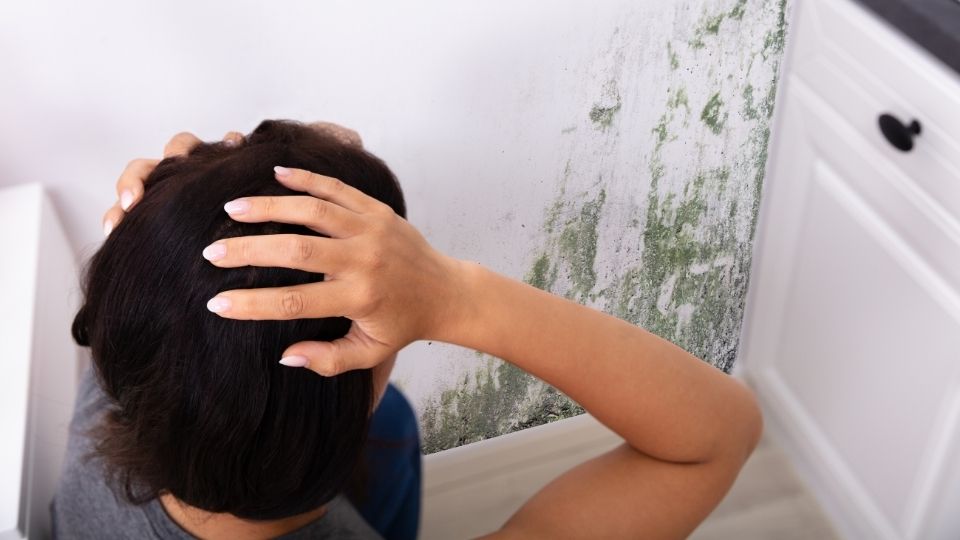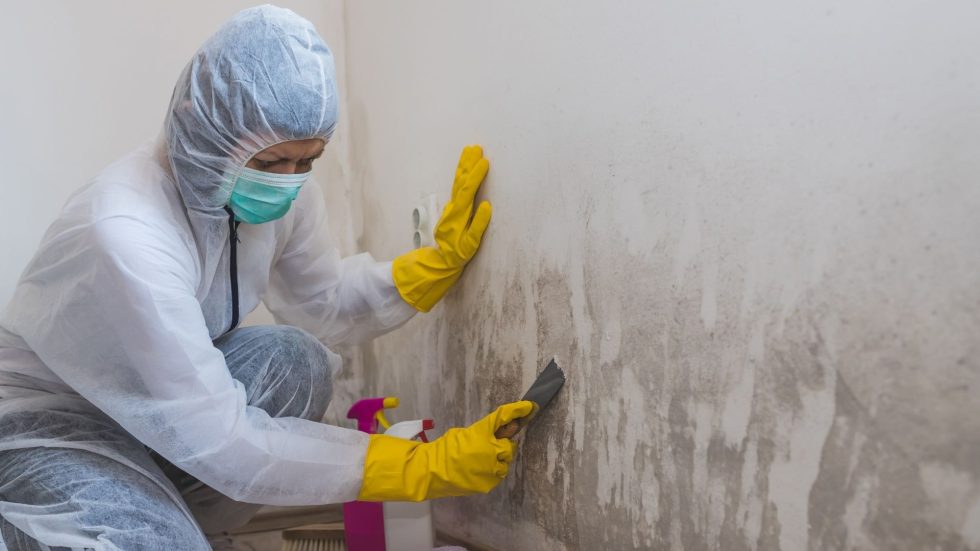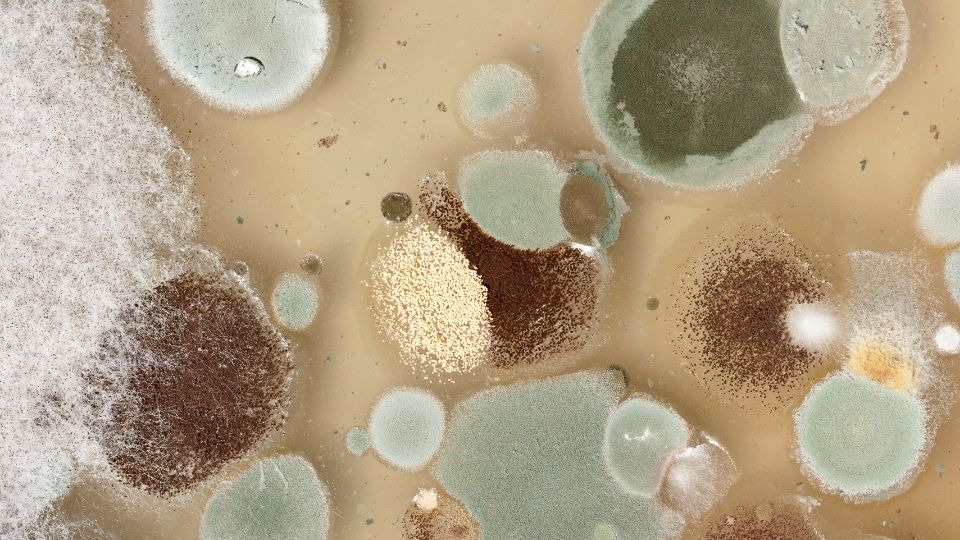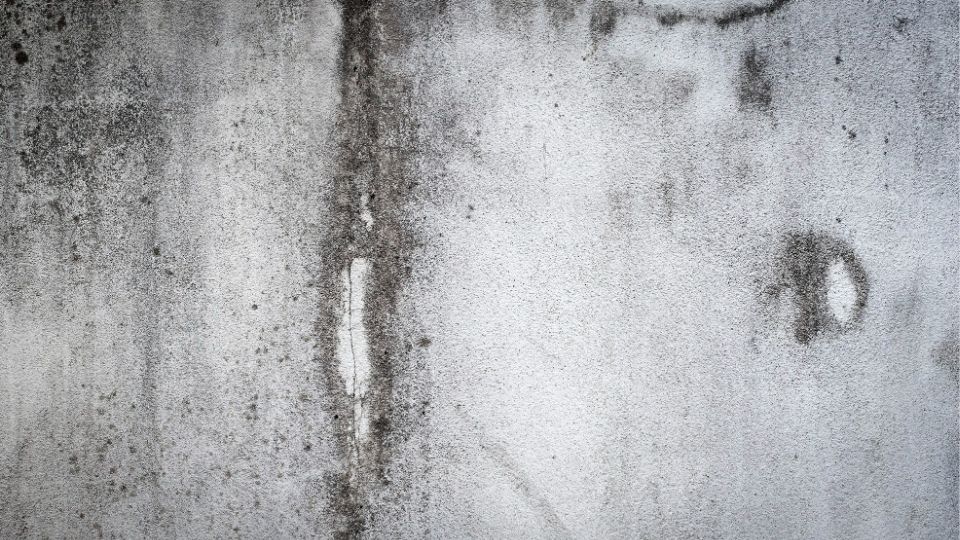
by Mold-B-Gone | Apr 6, 2022 | Mold Facts
Mold is a nasty problem to have in your home. Luckily, it can’t grow on all surfaces. But what about plaster?
If your home is like most, it has a lot of plaster in it. Today, we are going to examine whether or not mold can grow on plaster and what this means for you as a homeowner.
Can Mold Grow on Plaster? No…But There’s More to It
Mold needs two things to grow: a food source and moisture. Plaster is inorganic and non-porous, so it can’t provide mold with a food source or moisture. But that doesn’t mean that plaster is immune to mold growth.
Mold does still grow on plaster if there is another surface for it to feed off of like wood or paper. And if there is enough moisture present, mold will find a way to grow.
So, while mold cannot directly grow on plaster, it can still cause problems in your home. If you have a mold problem, you should address it as soon as possible to prevent it from getting worse and to protect the health of everyone who lives in or visits your house.
What Surfaces Can Mold Grow On?
Mold can grow on just about any organic surface as long as there is moisture present. This includes wood, paper, drywall, and insulation. It can even grow on certain types of paint and upholstered furniture.
Additionally, dirt and dust can create ideal environments for mold to grow. So any dirty surface is one mold can exploit. That’s why it is often found in air filters and dirty air ducts. And why mold grows in your attic.
Spotting Mold in Your Home
Mold can be tricky to spot if you aren’t trained to do so. It often looks like a stain or discoloration on surfaces. And it can have a musty smell. If you suspect mold, the best thing to do is have a professional come and take a look. They will be able to confirm whether or not you have mold and help you develop a plan to get rid of it.
Take Action Against Mold Today
If you think you may have mold in your home, don’t wait. The longer you wait, the worse the problem will become. Contact our professional mold cleaning service in Atlanta today and get rid of that mold for good!

by Mold-B-Gone | Feb 16, 2022 | Mold Remediation, Uncategorized
How long does mold remediation take? Mold remediation can take some time to complete. The amount of time it takes to remediate the mold will depend on a variety of factors, including the size and location of the contamination, as well as the type of mold. In this blog post, we’ll outline what happens during mold remediation and how long you can expect mold removal to take.
The Preparation Stage
This stage usually takes the longest, as it involves setting up the worksite and ensuring that all of the necessary equipment is on hand. Depending on the size of the contaminated area, this could take anywhere from one to five days.
Clean-Up
Once the preparation stage is complete, it’s time for the actual clean-up process to begin. This generally takes less time than the preparatory phase, and typically lasts between one and two days.
Disinfection
Next comes disinfection, which can be done either with chemicals or UV light. This step usually only requires a few hours, though in some cases, it may take up to 24 hours.
Drying
After disinfection, the remediation team will dry out any damp areas in order to prevent further mold growth. This is an essential step and can take anywhere from one day to several days, depending on how much drying needs done. The type of equipment used also plays a role here; high-velocity air movers may speed up this process considerably compared with heaters or dehumidifiers.
Tidying Up
Finally, all waste materials should be disposed of properly and work areas cleaned so that they look as good as new! Once these last few tasks are completed (which will typically take less than 24 hours), then your home is ready to go.
Will Mold Remediation Disrupt My Life?
This depends on how extensive the mold is. If it’s just in one room or a small area, you might be able to continue living in your home during the remediation process. However, if there have been serious problems with mold growth throughout most parts of the house, then it may not be safe for anyone to stay while this work is being done due to health risks associated with exposure over long periods of time.
If You Have Mold Issues in Your Home, Call US Today!
During our assessment, we will determine how long your mold removal will take and go over the process step by step with you so you know exactly what to expect. For mold removal service in Atlanta, contact Mold-B-Gone.
Discover the Reasons to Hire a Professional Mold Remediation Service.

by Mold-B-Gone | Feb 9, 2022 | Mold Facts, Uncategorized
Mold is a hot topic right now. You may have seen articles claiming that mold can cause all sorts of health problems, including headaches and migraines. Is this true? Can mold cause headaches and migraines? And if it can, what can you do to protect yourself from the dangers of mold?
In this blog post, we will explore the link between mold and headaches/migraines and provide some tips for keeping yourself safe.
Mold Is Well-Known to Cause Health Problems
Mold has been linked to a variety of health problems, including headaches and migraines. In fact, a study published in the journal Headache found that people who are exposed to mold are two times more likely to experience migraines.
How Does Mold Cause Headaches and Migraines?
There are several ways that mold can cause headaches and migraines. For example, mold can release toxins into the air, which can lead to respiratory problems. Mold can also cause allergies or asthma attacks, which can lead to headaches or migraines.
How Can I Protect Myself From Mold?
If you are concerned about the link between mold and headaches/migraines, there are steps you can take to protect yourself. First, make sure that your home is properly ventilated. This will help reduce your exposure to mold toxins. Second, keep your home clean and free of clutter. This will help reduce the chances of mold growth. Finally, if you are experiencing symptoms of a mold allergy or asthma attack, seek medical help right away.
What If I Already Have Mold in My Home?
If you already have mold in your home, contact a professional mold remediation service today. A mold remediation service will inspect your home for any signs of moisture or water damage, which can lead to the growth of mold. They will then use specialized equipment to remove all traces of mold from your home.
How Do I Find a Good Company for Mold Remediation?
There are many cleaning companies that claim to offer mold cleaning services in Atlanta. However, unless they specialize in mold remediation, they won’t deliver the level of results you need to truly eliminate mold and protect your health. Instead, turn to mold cleaning professionals like those at Mold-B-Gone. Not only can we clean mold, but we have the special tools needed to screen for its presence, locating the source and verifying that all spores have been removed.
Learn more about mold and your health. Read What Is The Link Between Mold and Parkinson’s Disease?

by Mold-B-Gone | Jan 21, 2022 | Mold Facts, Uncategorized
Mold spores are present everywhere, in both indoor and outdoor environments. When the conditions are right, they will begin to grow and spread. In this blog post, we will take a look at how long it takes for mold growth and spread. We will also discuss how you can prevent it from becoming a problem in your home or business.
Which Conditions Help Mold Spores Thrive?
Mold can grow in almost any environment. This is because it takes very little to thrive and most places have the essential elements. The following are some of the key conditions that help mold spores thrive:
- Moisture: One of the most important elements for mold growth is moisture. This can be from a leak, high humidity, or water damage.
- Food: Mold spores feed on organic matter like wood, paper, fabric, and dust.
- Darkness: Mold thrives in dark environments where it is not disturbed.
Preventing Mold Growth and Spread
The best way to prevent mold growth and spread is by keeping your environment dry and clean. You should also inspect your property for any potential sources of water damage. If you do find a problem, be sure to address it right away.
In addition to prevention, there are also some steps you can take to remediate mold growth and spread. This includes cleaning the affected area and removing any contaminated materials. If the problem is severe, you may need to call in a professional.
How Long for Mold Growth and Spread?
Mold growth and spread can happen very quickly or over a period of time. The following are some general timelines for different types of environments:
- Indoor environment: In an indoor environment, mold can grow in as little as 24 hours. It can also spread rapidly, reaching other parts of the home within 48 hours.
- Outdoor environment: Outdoor mold spores will not start to grow until they come into contact with moisture. Once they do, it can take anywhere from a few days to a week for them to start to grow.
It is important to note that these timelines are just general guidelines and there may be variations depending on the specific situation. If you are concerned about mold growth or spread, be sure to consult with a professional. They will be able to advise you on the best course of action for your property.
For more information on mold remediation in Atlanta, contact Mold-B-Gone.
Get more information on the health effects of mold by reading How Do I Know If Mold Is Making Me Sick?

by Mold-B-Gone | Dec 23, 2021 | black mold removal Atlanta
Black mold is a problem that can be found in many households, and it can be difficult to identify by sight alone. If you suspect the presence of black mold but aren’t sure if you have found it yet, don’t worry! There are some tell-tale signs that will let you know if the black stuff has set up shop in your home. Some people say they can smell black mold before they see it—but what does black mold smell like? Read on to find out more about the common odors associated with this type of fungus.
What Is Black Mold?
Black mold is a type of fungus that can cause many different health problems. It grows in wet, dimly lit areas and thrives on moisture. If you have black mold growing in your home or property, it could be wreaking havoc on your walls and ceiling while also causing respiratory issues for anyone who comes into contact with it.
How to Identify Black Mold Visually
Black mold can be identified by its black, furry appearance. However, if you’re not sure if the black stuff you’ve found is actually mold, there are some other ways to tell. Look for any areas where the wall or ceiling appears to be wet or damp and check for signs of condensation. If it’s been more than a week since you’ve had any precipitation, and there’s still water damage present, it’s likely that black mold is to blame.
How Does Black Mold Smell?
Some people say they can smell black mold before they see it. The odor associated with black mold is often described as musty, earthy, or mildew-like. If you notice a strong, dank odor that’s not necessarily unpleasant but isn’t familiar either, it might be coming from black mold spores—and your first step should be to contact the professionals at Mold-B-Gone for advice on next steps.
How Dangerous Is Black Mold?
When it comes to black mold, the danger isn’t in simply smelling or seeing it – exposure can cause serious health problems for you and your family. Symptoms of exposure may include allergies, an asthma attack, runny nose, watery eyes, and rashes on skin that has been exposed to black mold spores over time. Exposure to high levels of black mold spores can even be fatal.
If you think you might have black mold in your home, it’s important to take action right away. Mold-B-Gone is here to help. Contact us today for mold removal in Atlanta!
What are other signs you might have mold? Read: Top 10 Warning Signs of Black Mold Exposure!





